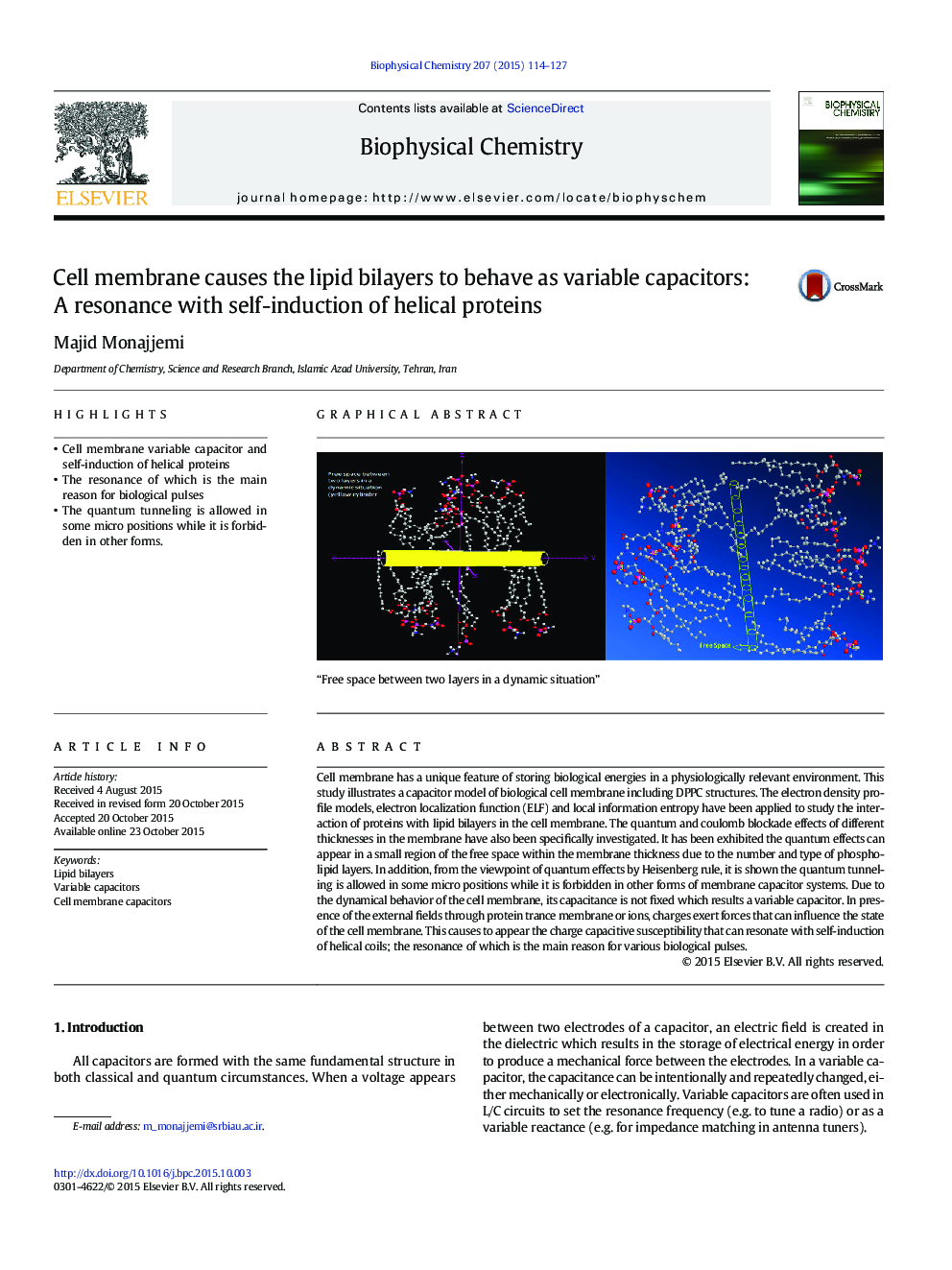| Article ID | Journal | Published Year | Pages | File Type |
|---|---|---|---|---|
| 5370811 | Biophysical Chemistry | 2015 | 14 Pages |
â¢Cell membrane variable capacitor and self-induction of helical proteinsâ¢The resonance of which is the main reason for biological pulsesâ¢The quantum tunneling is allowed in some micro positions while it is forbidden in other forms.
Cell membrane has a unique feature of storing biological energies in a physiologically relevant environment. This study illustrates a capacitor model of biological cell membrane including DPPC structures. The electron density profile models, electron localization function (ELF) and local information entropy have been applied to study the interaction of proteins with lipid bilayers in the cell membrane. The quantum and coulomb blockade effects of different thicknesses in the membrane have also been specifically investigated. It has been exhibited the quantum effects can appear in a small region of the free space within the membrane thickness due to the number and type of phospholipid layers. In addition, from the viewpoint of quantum effects by Heisenberg rule, it is shown the quantum tunneling is allowed in some micro positions while it is forbidden in other forms of membrane capacitor systems. Due to the dynamical behavior of the cell membrane, its capacitance is not fixed which results a variable capacitor. In presence of the external fields through protein trance membrane or ions, charges exert forces that can influence the state of the cell membrane. This causes to appear the charge capacitive susceptibility that can resonate with self-induction of helical coils; the resonance of which is the main reason for various biological pulses.
Graphical abstract“Free space between two layers in a dynamic situation”“it is suitable space for electron tunneling in a coulomb blockade effect”Download full-size image
